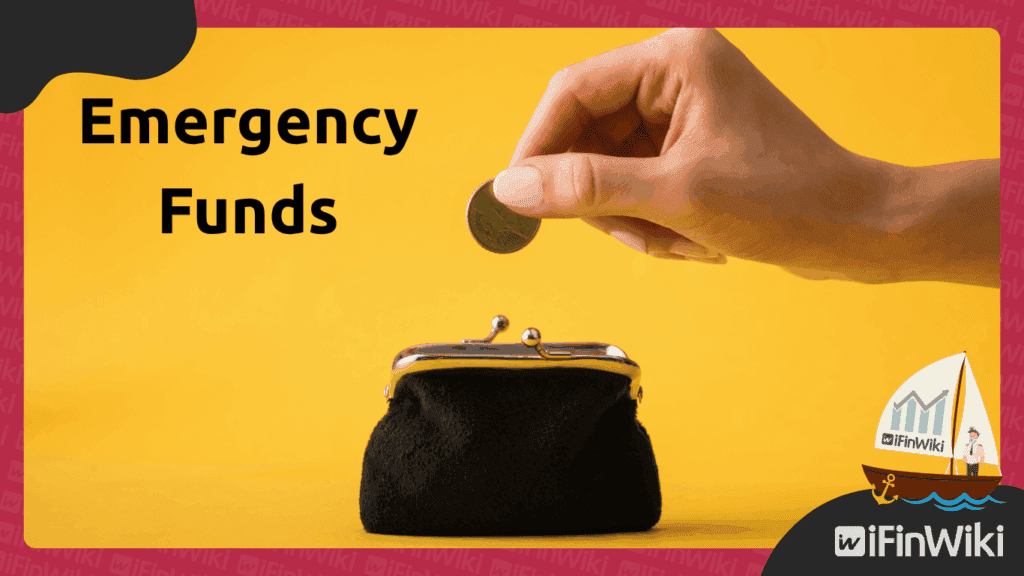When the financial seas get rough — job loss, car breakdowns, unexpected medical bills — an emergency fund acts as your lifeboat, keeping you afloat until calmer waters return. Without it, even small storms can sink your finances.
But what exactly is an emergency fund? How much do you need? Where should you keep it? And how do you build one when you’re already juggling expenses?
Let’s drop anchor and explore.
What Is an Emergency Fund?
An emergency fund is a dedicated pot of money set aside just for the unexpected. Think of it as financial self-defence — your own buffer against life’s more unwelcome surprises.
These aren’t just any expenses. We’re talking about things that are urgent (you can’t delay them), necessary (you can’t ignore them), and often unpredictable (you can’t plan for them in your regular budget). A burst boiler, sudden job loss, emergency travel or an unexpected vet bill all qualify.
But a new phone on sale, a last-minute holiday, or a fancy night out? Not emergencies. Those belong in your general savings or a separate sinking fund.
Why You Need One
An emergency fund isn’t there to make you rich — it’s there to stop you from going broke.
Without one, a single financial setback could force you into high-interest debt, payday loans, awkward favours from friends, or dipping into your long-term investments. Each of those options comes with its own price — whether in stress, cost, or missed opportunities.
With a fund in place, you’re the one calling the shots. You can act quickly without scrambling for a solution. It’s your money, on your terms.
How Much Should You Save?
There’s no one-size-fits-all answer, but here’s a general guide to help you map your course.
If you’re just getting started, aim for a starter fund of £500 to £1,000. This can cover most minor emergencies without derailing your budget and gives you a solid psychological win.
For those with steady income and minimal dependents, three months’ worth of essential expenses is a good next target. This gives you breathing space if your income suddenly stops or unexpected bills arrive all at once.
If you’ve got a family, mortgage, or irregular income, you might need more protection — six months of essentials is a solid buffer.
You don’t need to build it all overnight. Like any worthwhile financial goal, this one’s about consistent progress over time.
Where to Keep It
Your emergency fund needs to be safe, accessible, and separate from your day-to-day spending. That means no risky investments and no tucking it into your current account where it might get spent by accident.
Top choices in the UK include:
- Instant Access Savings Accounts — Easy to open, FSCS-protected, and ideal for quick withdrawals.
- Cash ISAs — Add a tax shield to your savings, but check the provider’s access terms carefully.
- Premium Bonds — These offer a chance to win prizes instead of earning interest, and your money remains available when needed — though returns aren’t guaranteed.
Avoid accounts with withdrawal penalties, fixed terms, or those that mix your emergency cash with your regular spending.
How to Start Building It
Start by opening a separate savings account — even naming it “Emergency Fund” can help you stay focused. Automating small monthly contributions, like £10 or £50, adds up faster than you’d expect.
Windfalls such as bonuses, cashback, or tax refunds are perfect top-up opportunities. If money is tight, consider small swaps — skipping one takeaway a week could mean £30 a month towards your fund.
Visual tools like goal trackers or savings thermometers can help keep your motivation high. Remember: every step, no matter how small, moves you closer to financial stability.
A Few Extra Tips
Knowing your essential monthly expenses makes setting a savings goal much easier, so keeping a simple budget is helpful. Once your fund hits the 3–6 month target, it’s wise not to over-save — future cash can be directed toward investments or other financial goals.
And if you do dip into your fund, prioritise replenishing it — that safety net should always be there when you need it.
Captain’s Checklist
✅ Open a separate instant access savings account
✅ Set a starting goal of £500–£1,000
✅ Automate regular transfers — even small ones
✅ Know what qualifies as an emergency (and what doesn’t)
✅ Increase the fund over time to cover 3–6 months of essentials
Final Thoughts
An emergency fund might not be flashy or exciting, but it’s one of the smartest and most empowering steps you can take. When life doesn’t go to plan, this fund gives you space to breathe and think — rather than panic and react.
Start where you are. Keep going. And remember: the goal isn’t perfection — it’s preparation.
P.S. Explore our Tools section: your one-stop spot for practical tools, new offers, and ways to make your money go even further.
Note: All investments carry some degree of risk, so it’s important to understand how your money could be affected. Not all risks are equal—the potential for gains or losses can vary significantly from one investment to another. This article is for general information only and does not constitute financial advice. Always consider your personal circumstances before making any investment decisions.

